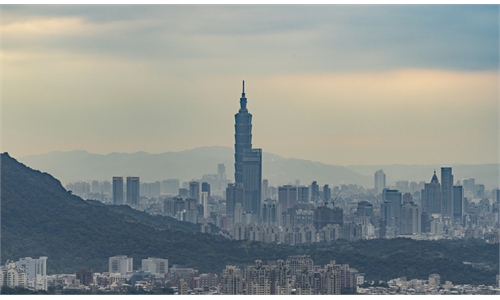IN-DEPTH / IN-DEPTH
Chinese sea goddess fosters unity across Taiwan Straits through time-honored tradition, transcends political divide
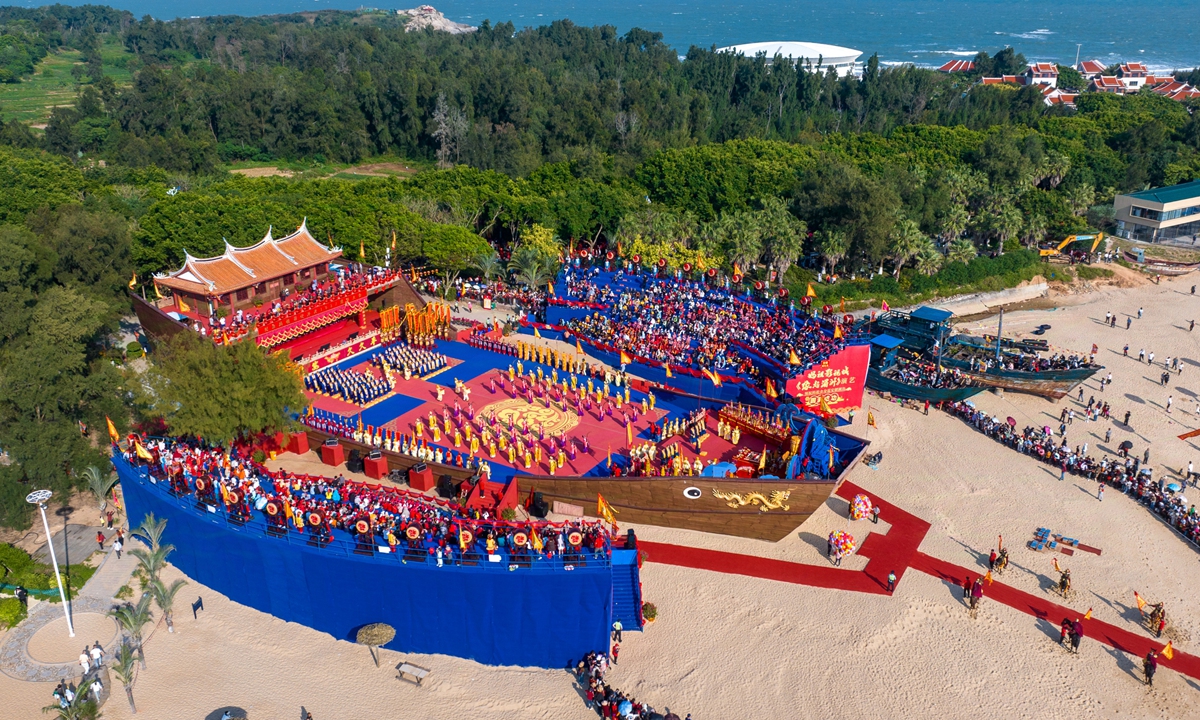
A Mazu worship ceremony is held on Meizhou Island, Fujian Province, on October 11, 2024. Photo: IC
The air vibrated with palpable energy as over 1,000 pilgrims from Taiwan converged on Meizhou Island in Putian, East China's Fujian Province on October 24. Their vibrant silk banners fluttered in the wind as they came to worship Mazu, the revered Chinese sea goddess.This has been a regular scene on Meizhou Island this year.
"Every pilgrimage to Mazu is a journey home," Taiwan pilgrims who make repeated trips to Meizhou Island told the Global Times. They say these journeys are more than just religious activities; they are also a testament to the shared ancestral roots that bridge the two sides of the Taiwan Straits.
"Walking the route alongside my fellow pilgrims deepened my understanding of our shared origins," said Hsieh Mei-hui, a devout follower of Mazu from a temple in Hsinchu, Taiwan. "It's a connection that transcends words." She shared this experience with the Global Times after participating in a mid-October ceremony alongside nearly a thousand other Taiwan devotees.
She noted that a short documentary uploaded to her temple's website of her fellow devotees on pilgrimage, resonated deeply with other devotees in Taiwan, garnering tens of thousands of views in just a few days.
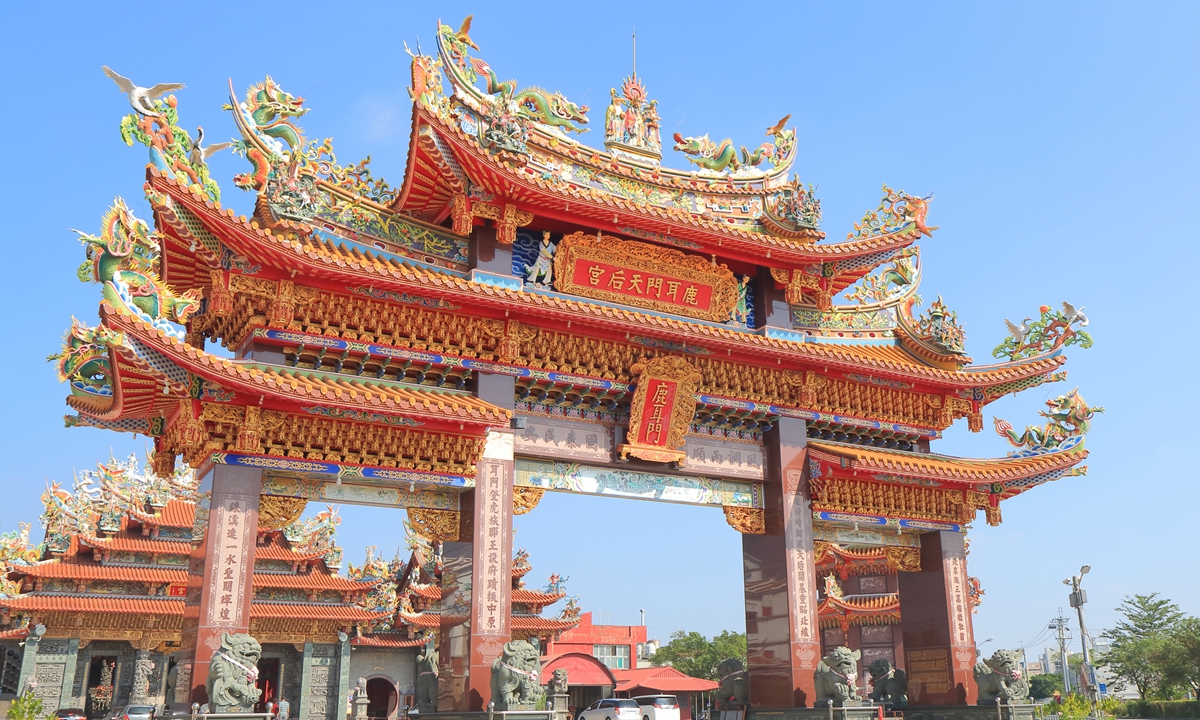
The Luermin Tianhu Temple in Tainan, China's Taiwan region Photo: VCG
With over 16 million Mazu devotees representing about two-thirds of the island's population, the Mazu faith has become a cultural bedrock for many, according to the Guangming Daily. Despite deliberate obstruction by the Democratic Progressive Party (DPP) authorities, their pilgrimage to the Chinese mainland feels like a homecoming - a long-awaited need, according to several interviewees from Taiwan reached by the Global Times."We are all descendants of Mazu, and always hope to see our siblings frequently," Wu Chin-chan, president of an association for promoting Mazu culture in Taiwan, told the Global Times.
Experts emphasized that this shared religious faith is not a political tool but a cultural treasure cherished through generations. It provides spiritual solace and fosters understanding, trust, and peaceful development between both sides of the Taiwan Straits in people-to-people exchanges.
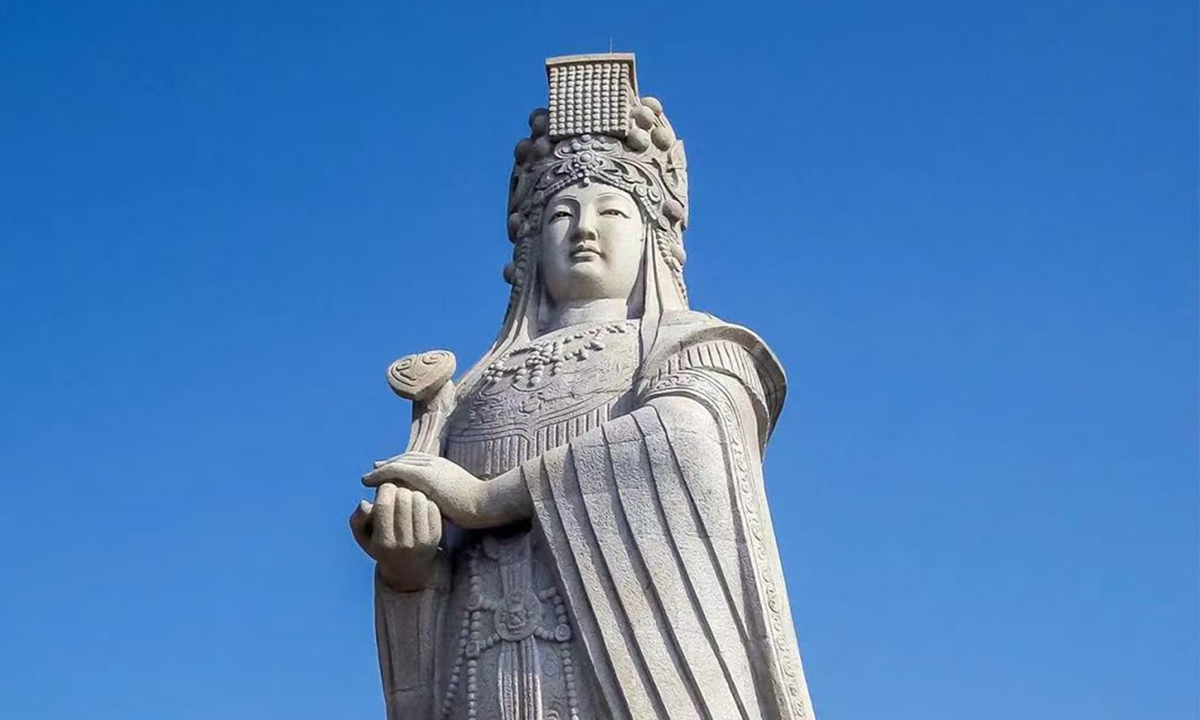
A Mazu statue on Meizhou Island, Fujian Province Photo: Courtesy of Meizhou Mazu Ancestral Temple
Deep-rooted connection
"These events are deeply moving," said Hsieh, recalling the thunderous drums and booming firecrackers that reverberated throughout the Mazu Ancestral Temple ground during her second pilgrimage to Meizhou Island.
"Seeing people from both sides of Taiwan Straits coming together with such sincerity to participate in the rituals and offer their prayers… it's incredibly powerful," she said.
Mazu is a deified young woman named Lin Mo believed to have lived in the 10th century on Meizhou Island. Her legend speaks of compassion and kindness. Revered as the guardian of maritime safety for centuries, she embodies a shared cultural heritage, with over 300 million devotees worldwide, Xinhua reported.
Mazu belief and customs were inscribed on UNESCO's Representative List of Intangible Cultural Heritage of Humanity in 2009.
According to Zhang Liming, media director at the Meizhou Mazu Ancestral Temple in Fujian, this year's pilgrimage witnessed over 1,000 people from more than 100 temples across Taiwan travelling to Meizhou Island, where the goddess was born. The temple is the most important Mazu religious center.
"The worship ceremony showcased a beautiful fusion of cultural traditions from both sides of the Straits. We had Taiwan's unique parade performance during which people perform Mazu's divine warriors, alongside the Chinese mainland's Dragon Dance and Yingge teams. Those teams' performance styles are different, but everyone felt a sense of familiarity with each other, which is the most concrete and true embodiment of the deep-rooted connection across the Taiwan Straits," Zhang said.
Liao Cheng-yang, chair of the management committee for a temple in Taiwan, emphasized the significance of visiting the Meizhou Mazu Ancestral Temple and tracing their roots back to the Chinese mainland.
"For us, it's a pilgrimage to the very heart of our shared cultural heritage, tracing back the origins of Mazu belief and its influence on our lives," Liao told the Global Times.
Statistics reveal that over 2,000 Mazu temples across the island of Taiwan have roots in the Chinese mainland, according to the Guangming Daily. Notably, the first procession of the golden statue of Mazu from Meizhou Island to Taiwan was in 1997.
"On social media, there are countless groups dedicated to Mazu. Many netizens expressed a strong desire to visit the mainland, especially the Meizhou Island," Hsieh said.
As a dance teacher who often travels to the mainland for cultural and artistic exchanges, Hsieh pointed out that in recent years, the promotion of traditional culture, including Mazu culture, in the Chinese mainland has grown impressively.
For instance, in recent years, research on Mazu culture has flourished across various academic disciplines, including anthropology, communication studies, religious studies, sociology, economics, and art studies. Institutions such as the Mazu culture research association in Fujian have been established.
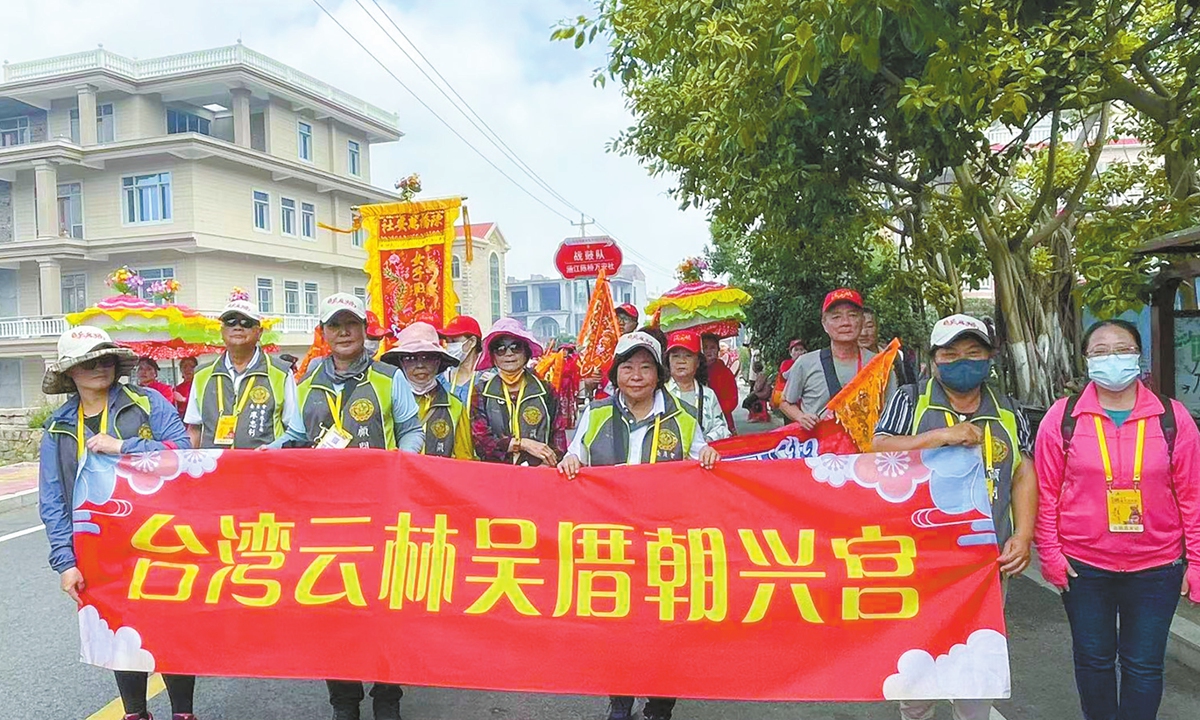
Devotees from Yunlin county, China's Taiwan region, take part in a ceremony to commemorate Mazu on Meizhou Island, Fujian Province, from October 9 to 13, 2024. Photo: Courtesy of Liao Cheng-yang
DPP's political anxiety
Liao has made over 30 pilgrimages to Meizhou Island in 36 years, participating in worship ceremonies at the Mazu Ancestral Temple.
While talking about the Mazu parade in October, Liao noted that he followed the parade to more places, and gained a more profound understanding of Meizhou Island and the Chinese mainland.
This time, Wu said he specially brought his eldest son to Meizhou Island to participate in the activity. He hoped that more young people like his son could have the influence of good traditional Chinese culture. He lamented how the DPP's relentless "de-Sinification" agenda has alienated many young people from Mazu culture.
Observers point to a deep-seated political anxiety toward Mazu worship among Taiwan separatist groups. In recent years, DPP authorities have consistently obstructed attempts by some Taiwan civic groups to invite the Mazu statue from Meizhou Island for a pilgrimage to Taiwan. They cite bureaucratic hurdles such as failing to meet the criteria of "necessity," "urgency," and "irreplaceability" for cross-Straits exchanges they set to justify these rejections, according to Xinhua.
To add fuel to the fire, the DPP also claimed that those believers are paid by the mainland for visits and religious exchanges, Reuters reported.
Sheng Jiuyuan, director of the Center for Taiwan Studies at Shanghai Jiao Tong University, told the Global Times that Mazu culture transcends regional and political boundaries, deeply resonating with people on both sides of the Straits.
It serves as a cultural bridge that fosters peace and stability, enhancing cultural identity recognition among compatriots. It is deeply ingrained in the hearts of peoples on both sides of the Straits, Sheng stressed.
"However, the authentic voices of the Taiwan people seem to have vanished from the news media controlled by the DPP," Wu lamented.
"Taiwan pilgrims come to Meizhou Island at their own expense," he stressed. "Mainland hosts welcome us with open arms, inviting us to share meals and engage in heartfelt conversations, where we swap stories about Mazu and other shared deities, learning about each other's local customs and traditions. These exchanges are as warm and familiar as a family reunion, filled with genuine human connection. Such sincerity deserves better than to be sullied by the taint of political maneuvering by the DPP," he said.
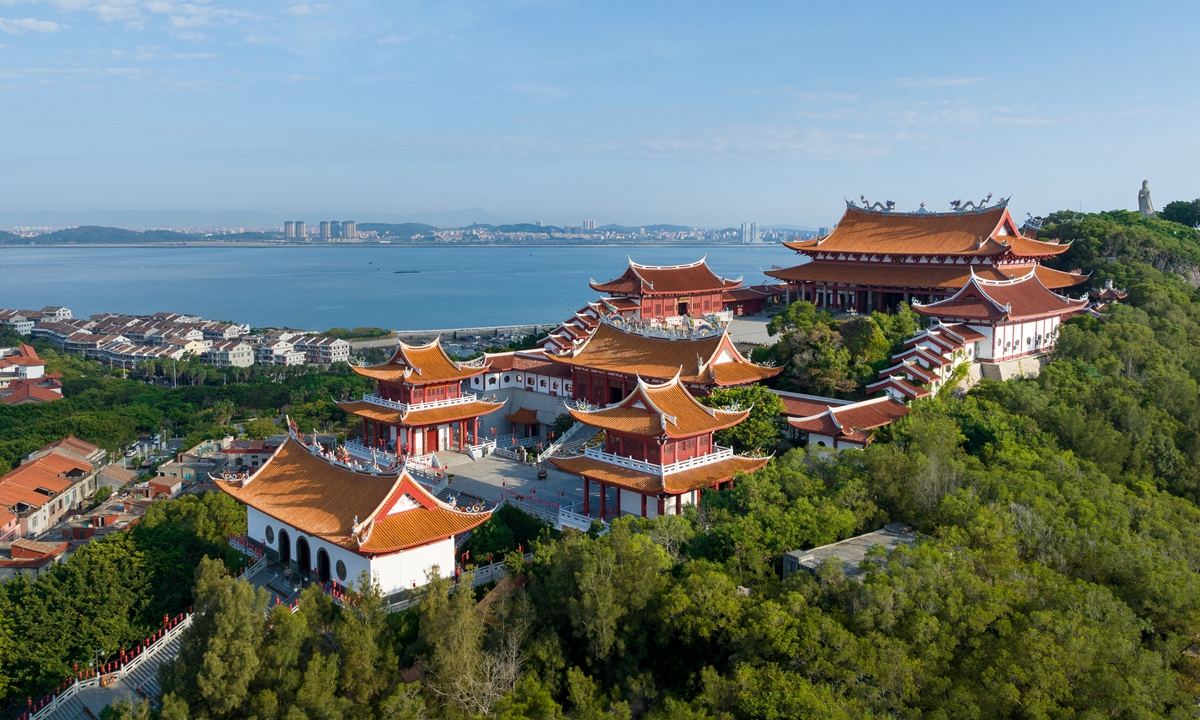
A Mazu cultural park located on Meizhou Island, East China's Fujian Province Photo: VCG
Ambassadors of communicationAfter concluding a pilgrimage to Meizhou Island with roughly 30 Taiwan temple representatives, Wu's travels took him to Quanzhou and Xiamen in Fujian, where he visited various other deities. His itinerary also included a stop at the Guan Yu Temples.
Wu noted that the cultural connections between the people on both sides extend beyond Mazu; figures such as Guan Yu, an ancient Chinese general in the Three Kingdoms period (220-280 AD); Chen Jinggu, divine protector of women and children originated in Fuzhou prefecture; and the Yan Emperor and Yellow Emperor, two legendary ancestors of the Chinese nation, have also forged strong links.
On May 15, approximately 1,200 people from Taiwan visited the Yan Emperor Mausoleum in Gaoping, North China's Shanxi Province, to pay homage to their ancestors. This time, the visitors included not only devotees but also a specially organized youth group to participate in the ceremony, allowing young friends to experience the ancestral worship of the Yan Emperor. The activities included offerings to the Yan Emperor, interactions between youth from both sides across the Straits, social gatherings for women from both sides, and visits and discussions for Taiwanese businesses and enterprises.
Experts say that these "deities" not only protect the peace of the region but are also widely recognized as "ambassadors of communication" across the Straits. They represent the fundamental aspirations of people on both sides regarding home and nation.
Regardless of how the political landscape evolves, compatriots on both sides will continue to uphold these cultural ties, illuminating the path to peaceful reunification and serving as a source of strength for resolving differences, enhancing understanding, and advancing together, the expert noted.
As Liao shared photos from the Mazu pilgrimage with the Global Times, he specifically sent one of himself gazing out at the Meizhou Island harbor with his back to the camera.
With travel from Fujian to islands of Kinmen, an island located off the coast of Fujian Province, and Matsu, a small island attached to Taiwan but close to the Chinese mainland, now resumed, Liao expressed his hope that Mazu would one day again embark on a vessel from Meizhou Island, through the waves of the Taiwan Straits, to witness the history and friendship between the two sides.


